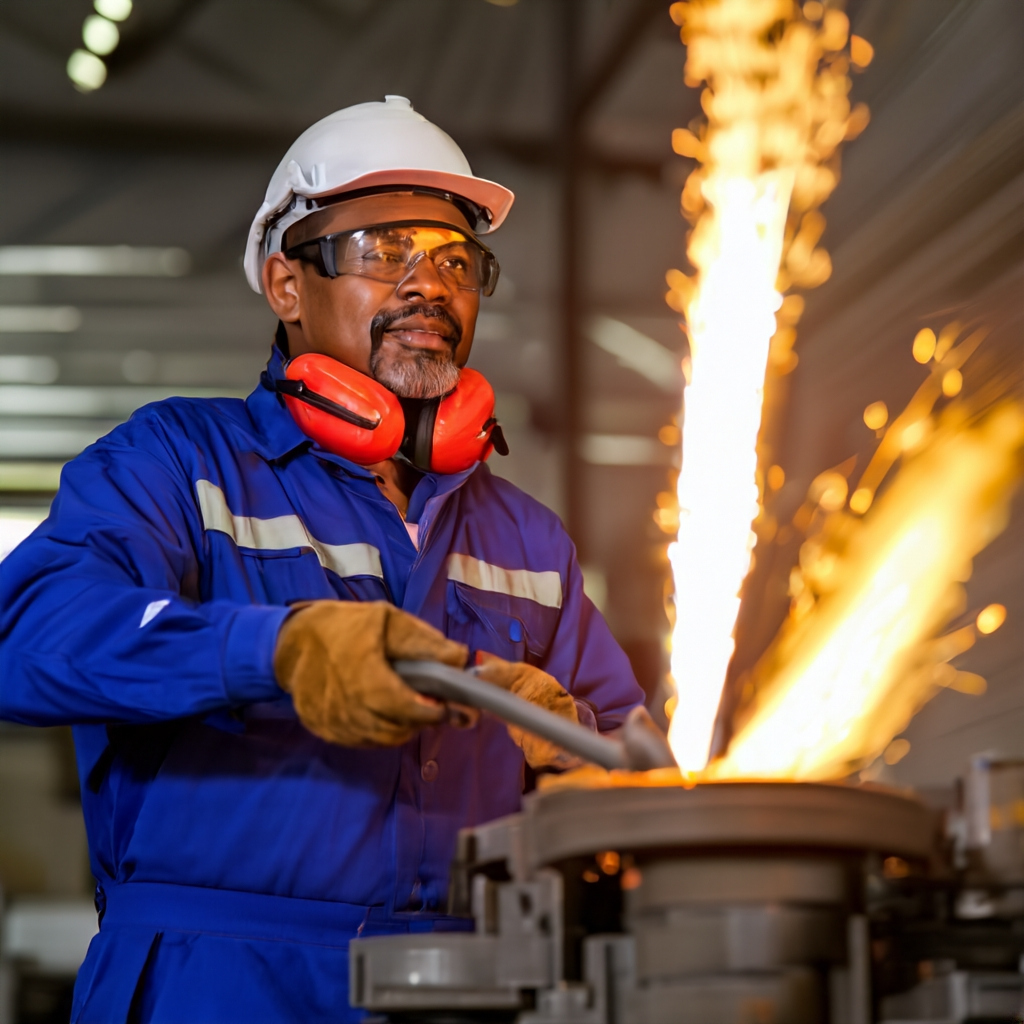- Industrial Supplies
- Coating & Finishing Systems
- Compressed Air Systems
- Assembly Tools
- Industries Served
- Aerospace & Defense
- Automotive & Specialty Vehicles
- Cannabis
- Construction & General Contracting
- Countertop Fabrication & Installation
- Food Processing
- Healthcare & Medical
- Logistics & Distribution
- Manufactured Building & Housing
- Manufacturing
- Metal Fabrication & Steel Works
- Millwork, Cabinetry, & Woodwork
- Packaging
- Pallets & Containers
- Plastics
- School Systems & Universities
- Signage
- Signs & Displays
- Textiles & Nonwovens
- Window & Door Installation
Summer safety: recognize, treat, and prevent heat exposure
So many industries require their workforce to be in hot spaces — inside and outside. During the summer months, work across the United States, especially in the South, can be brutal. Indoors, facilities can be sweatboxes. Outdoors, temperatures sometimes climb above 100.
In other words, heat exposure can be fatal.
That’s why it’s important to understand, handle, and hopefully prevent heat exposure.
Recognizing symptoms and treating them

There are three main stages of heat exposure: heat cramps, heat exhaustion, and heat stroke. Each stage has its own set of symptoms to watch out for and suggestions for what to do when it happens.
- Heat Cramps
- Symptoms: Muscle cramps (often in the legs or abdomen), heavy sweating, fatigue.
- What’s happening: Your muscles lose essential salts and fluids through sweat.
- What to do: Get to a cool place (with shade or air conditioning), drink water or a sports drink to replenish lost fluids or electrolytes, and rest. Try stretching cramped muscles gently.
- Heat Exhaustion
- Symptoms: Heavy sweating, cold/clammy skin, dizziness, headache, nausea or vomiting, muscle cramps, weak but rapid pulse.
- What’s happening: Your body is struggling to keep cool, and it’s starting to overheat.
- What to do: Follow the instructions for heat cramps, but add a light snack, use wet cloths on your skin (or take a cool shower) to bring down your temperature, and elevate your feet slightly when resting.
- Heat Stroke
- Symptoms: High body temperature (104°F or higher), hot/red/dry or damp skin, rapid pulse, confusion, slurred speech, unconsciousness.
- What’s happening: This is a medical emergency! Your body’s cooling mechanisms have failed, and it can be life-threatening.
- What to do: Call 911. While waiting for help, move the person to a cool place and reduce the temperature with ice packs. Keep an eye on their condition; you may need to perform CPR.

Preventing heat exposure
Dress for the heat
These days, there are many options that keep employees safe while preventing heat exposure.
Wear lightweight and loose-fitting safety apparel. Some suppliers have cooling vests, bandanas, washcloths, and more to keep your workforce’s core temperature down. Moisture-wicking clothing also helps reduce heat, including when your workforce is inside while it’s hot.
Outside workers should wear apparel with sun protection, sunscreen, and sunglasses. (Don’t forget to re-apply sunscreen every couple of hours, especially if you’re sweating.) Wear neck protection and wide-brimmed hats. Also, heat-reflective clothing may help keep employee’s temperatures cooler.
Stay hydrated

Drink plenty of water throughout the day, not just when you’re thirsty. Backpacks with water reservoirs and drinking tubes can ensure your workforce gets the necessary water, especially in places where water breaks are limited.
Eat light snacks throughout the day.
Plan accordingly, take breaks, pay attention, and train staff
If you can plan your workforce to avoid the heat, do so. Stop work before 10 a.m. and start again after 4 p.m. — the hottest part of the day. If you can’t schedule to avoid the heat, plan frequent breaks. Even if work is planned around the heat of the day, ensure you’re watching the temperatures to introduce breaks when needed.
Remind employees to remove their hard hats (when it’s safe) and use wet washcloths on their necks to cool down. Ask managers and other employees to check in with each other. Train your staff in the symptoms of heat exposure, how to treat it, and more importantly how to avoid it. Ensure your workforce pays attention to their bodies.
Use company policies and a support system to help prevent issues from arising.
Elevated can help your team stay safe
Sure, we have advice and ideas, but we also have safety apparel needed to keep your team safe. Contact us for a list of safety gear.
-
 December 2, 2014
December 2, 20147 deadly sins of compressed air
When putting together a compressed air system, temptation is all around you. You want the best system, but having the best doesn’t mean grabbing w… -
 January 8, 2015
January 8, 2015Get your compressors ready after the holidays
The holidays are over and for many plants that mean seasonal shutdowns or lower production demands are also a thing of the past. While everyone is… -
 February 4, 2015
February 4, 2015Don’t get fooled – go with the real deal (Kaeser and dealer expertise)
We’ve all been there. I would wager we’ve all done it. When it comes time to get an oil change or replace our windshield wipers, we want to go for…